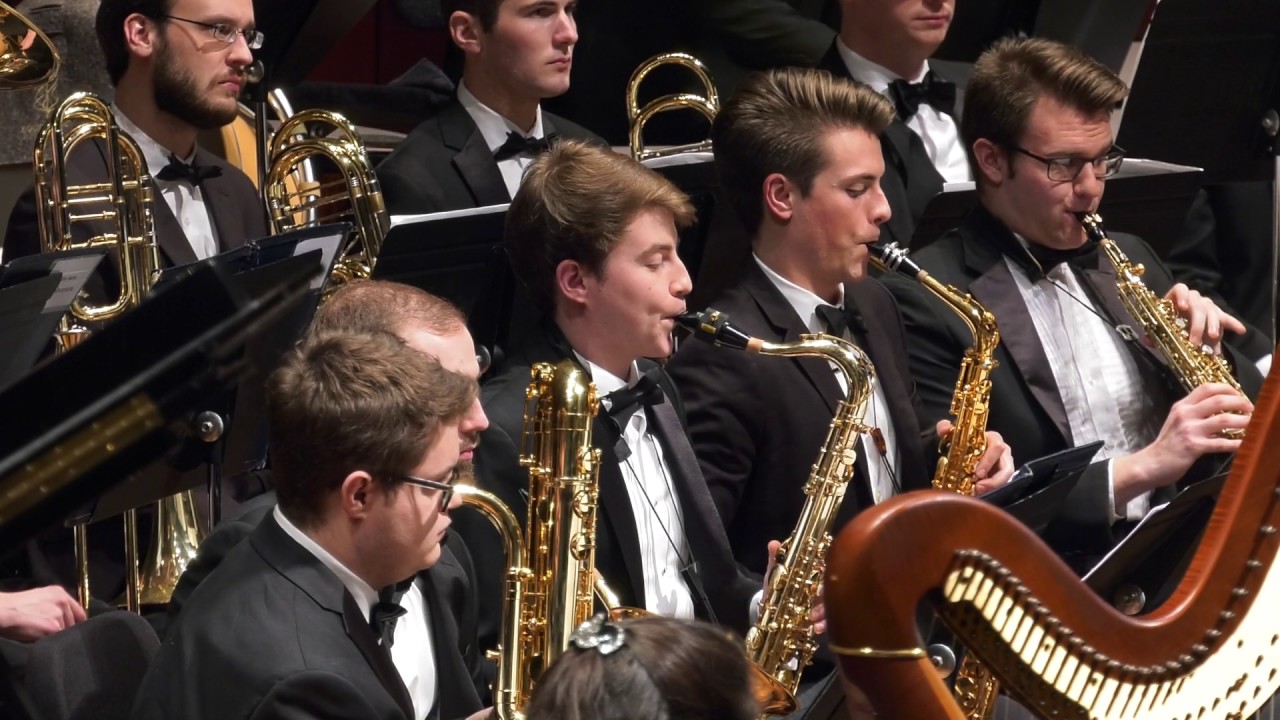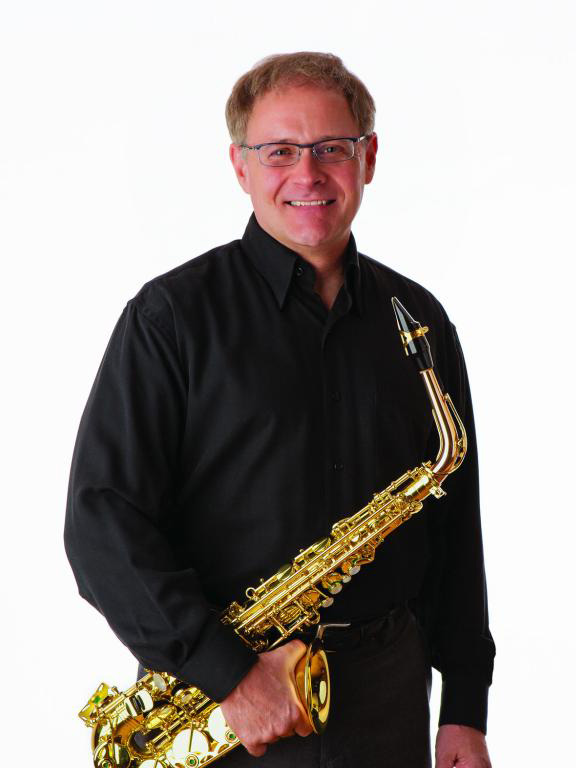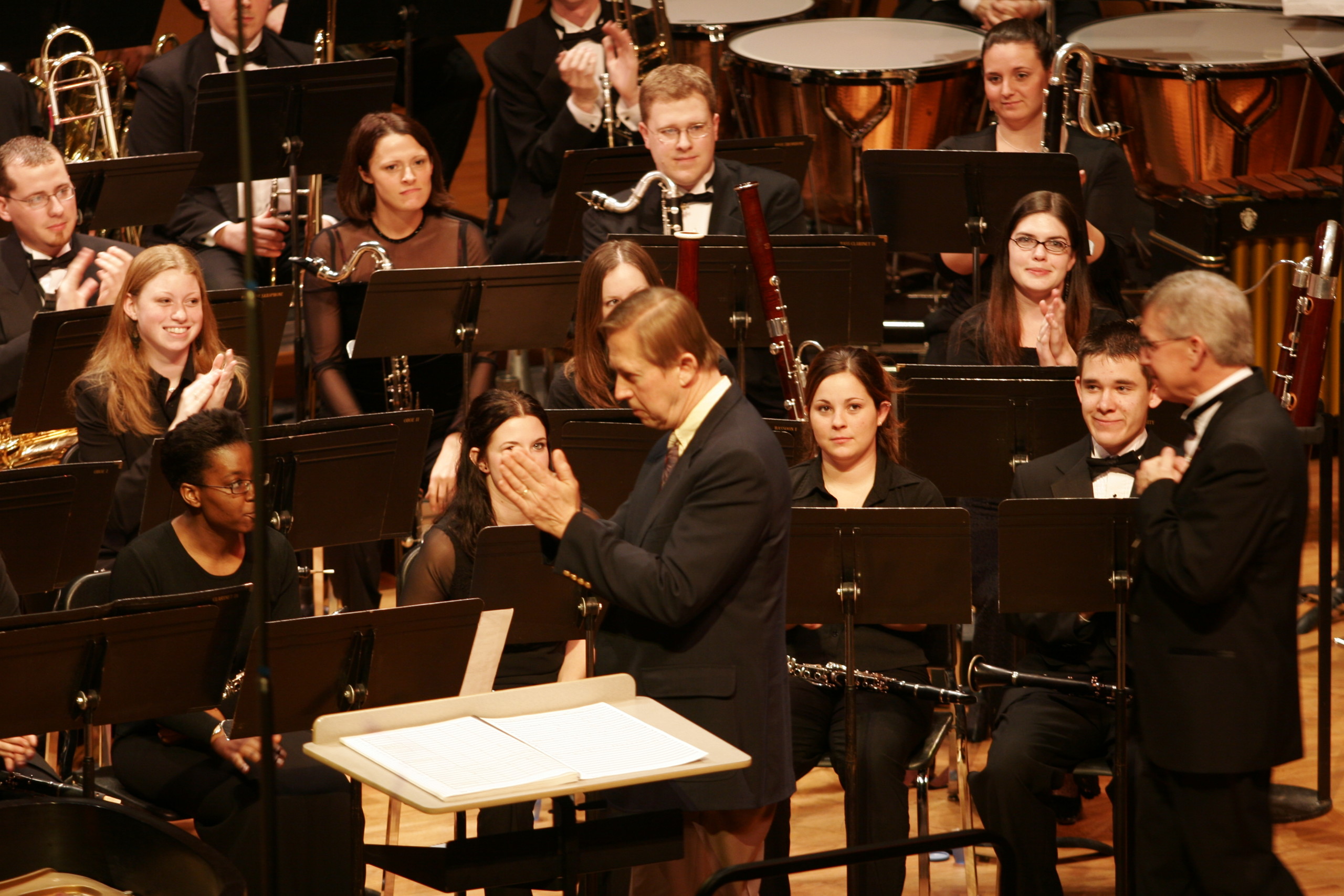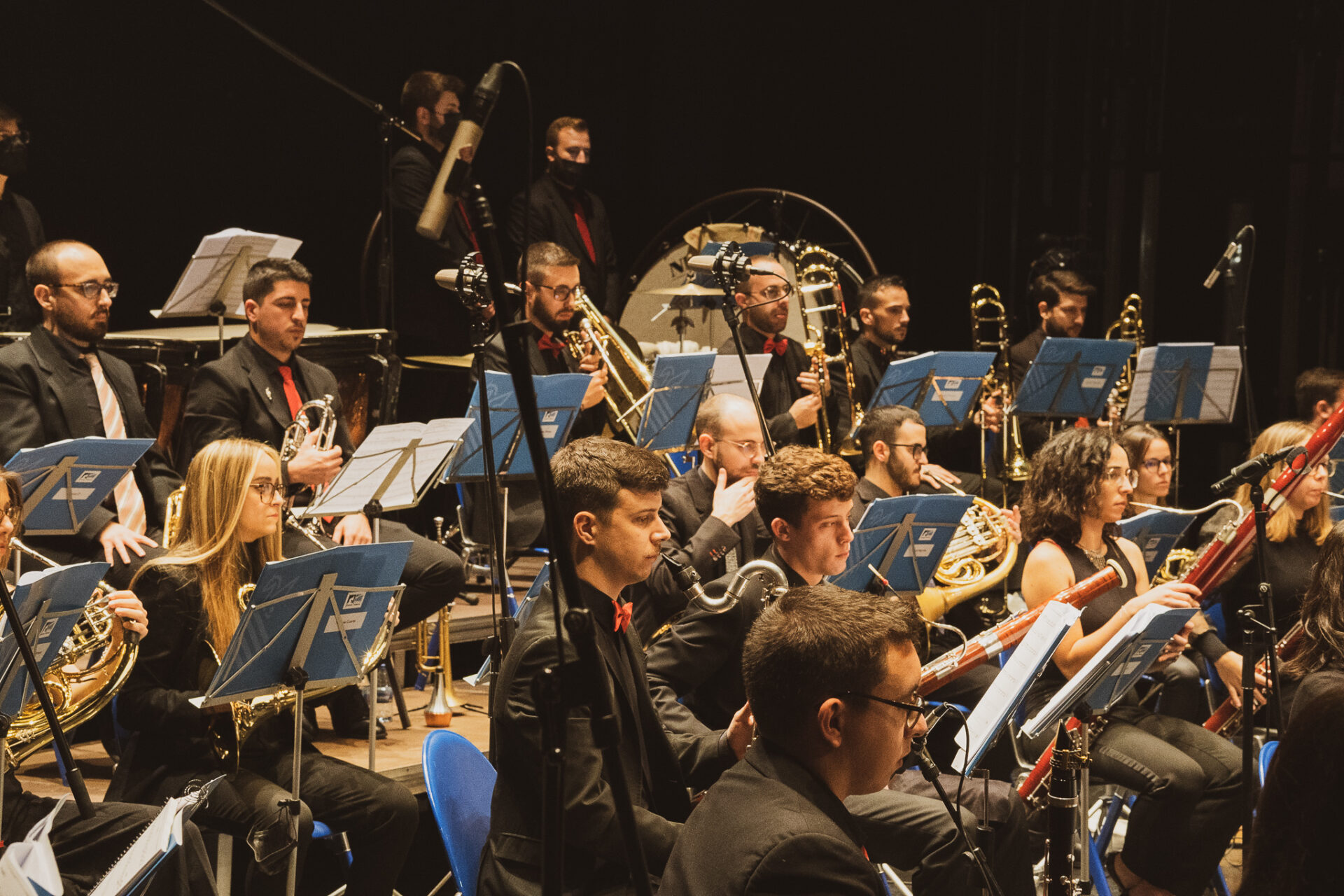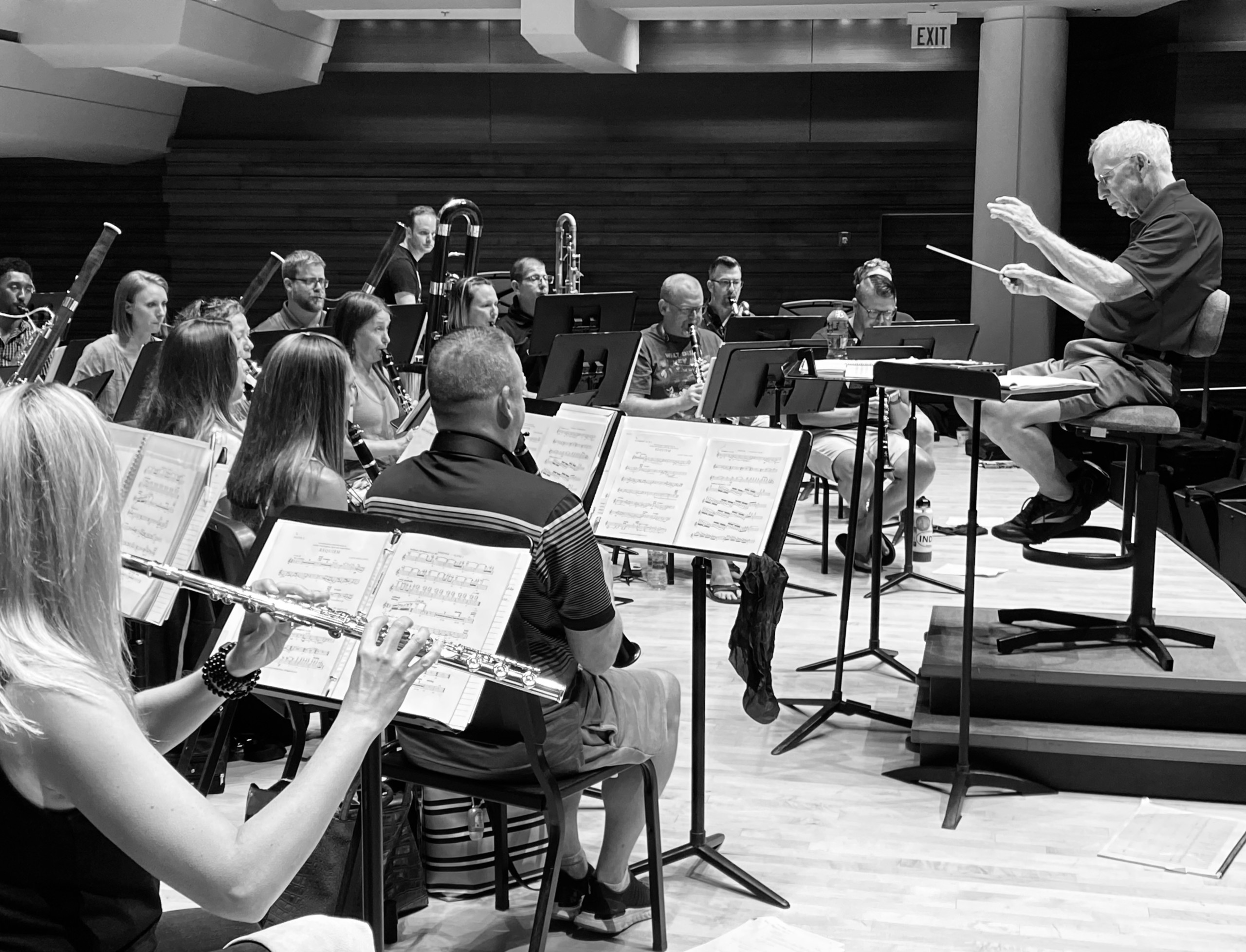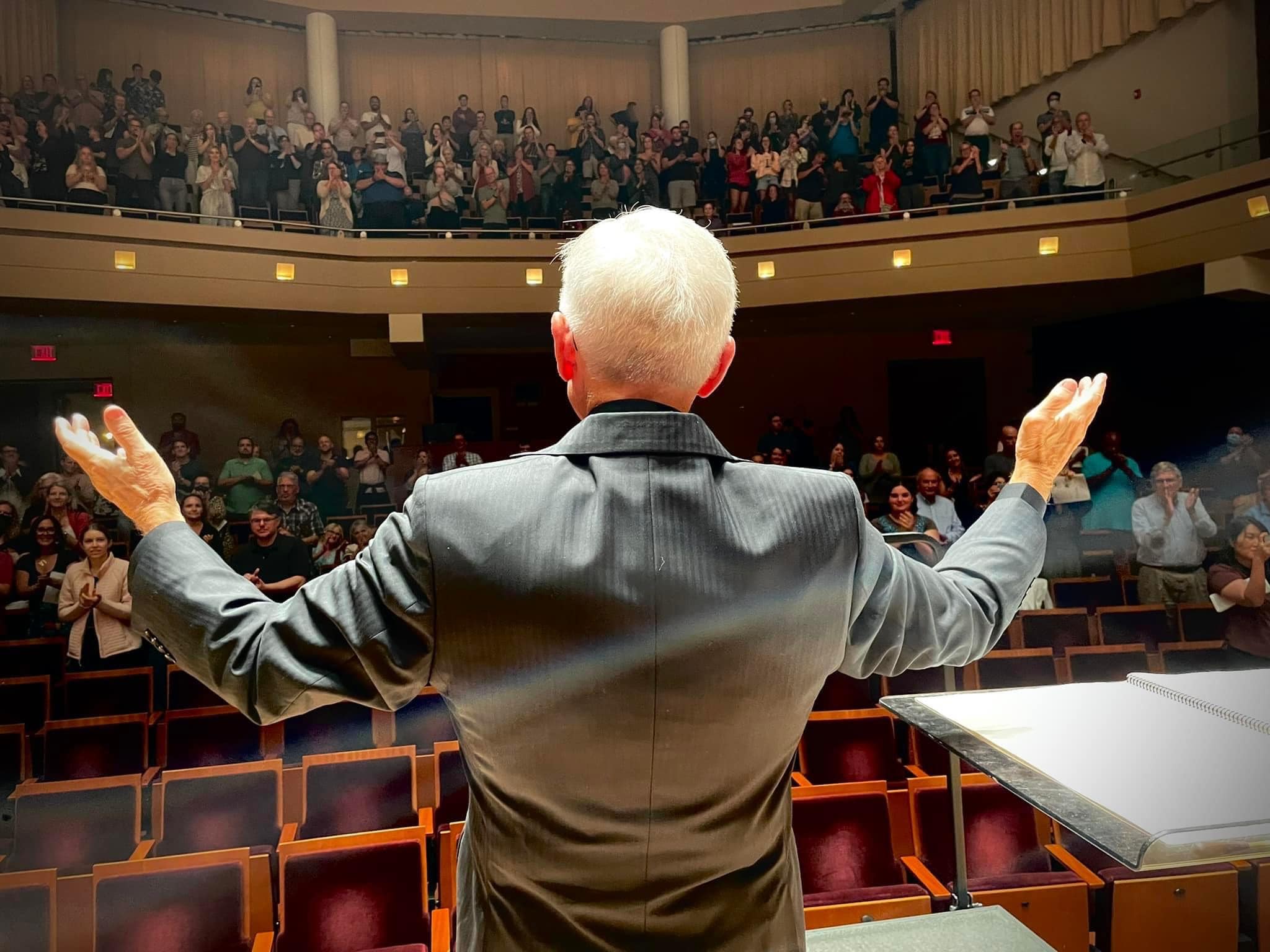Maslanka Weekly highlights excellent performances of David Maslanka’s music from around the web.
David Maslanka’s works for wind ensemble are some of the most sought after pieces in the repertoire. Hardly a week goes by without a major performance from a conservatory, university, high school, military band, or professional ensemble somewhere in the world. This week, we feature three new performances of favorite works: Symphony No. 8, Symphony No. 5, and Hell’s Gate.
Symphony No. 8
From David Maslanka’s Program Note:
Symphony No. 8 is in three distinct movements, bur the musical layout suggests a single large-scale panoramic vista.
I began the composition process for this symphony with meditation, and was shown scenes of widespread devastation. But this music is not about the surface of our world problems. It is a response to a much deeper vital creative flow which is forcefully at work, and which will carry us through our age of crisis. This music is a celebration of life. It is about new life, continuity from the past to the future, great hope, great faith, joy, ecstatic vision, and fierce determination.
The old is continually present in the new. The first movement touches the “Gloria” from my Mass: “Glory to God in the highest,” whatever that may mean to you: the power of the universe made manifest to us and through us.
The second movement is a large fantasia on the old Lutheran chorale melody Jesu meine Freude (Jesus My Joy). The life of Christ is one powerful image of the high creative: being willing to be broken to receive the new; giving oneself up entirely so that a new idea can be born. The old form of the organ chorale prelude underlies this movement – new language out of the old.
The third movement is a music of praise and gratitude for all that is. It can be traced to the very end of the favorite old hymn tune All Creatures of Our God and King – the part with the joyous descending major scale where all the bells ring out. I recently used this tune for a set of variations in a piece called Unending Stream of Life, a name which could also be a fitting subtitle for this new symphony.
Watch below as Michael Haithcock leads the University of Michigan Symphonic Band in a stunning rendition of this music.
More info
- Michael Haithcock
- University of Michigan Symphonic Band
- Symphony No. 8 @ davidmaslanka.com
Symphony No. 5
According to Maslanka,”Symphony No. 5 was composed around three well-known Chorale melodies: ‘Durch Adams Fall’ (Through Adam’s Fall) in the first movement, ‘O Lamm Gottes, Unshuldig’ (O Lamb of God, Without Blame) in the second, and ‘Christ Lag in Todesbanden’ (Christ Lay in the Bonds of Death) in the third and fourth. The third is a meditation on the theme of ‘Christ entombed,’ and the fourth is a full-blown fantasia on the ‘Christ Lag’ melody. Much of the music of this Symphony is urgent and insistent. I Have used the words ‘aggravated,’ ‘angry,’ and ‘overwhelming’ by way of description. But for all its blunt and assertive force, the Symphony is not tragic. It is filled with a bright and hopeful energy. The music does not try to illustrate the story of the Mass, but rather continually speaks to the theme of transformation – the transformation of tears into power, and the victory of life over death.”
Watch below as Jerry Junkin leads the University of Texas Wind Ensemble in a dazzling performance of this symphony.
More info
- Jerry Junkin
- University of Texas Wind Ensemble
- Symphony No. 5 @ davidmaslanka.com
Hell’s Gate
From David Maslanka’s Program Note:
Hell’s Gate was commissioned by the Hellgate High School Symphonic Band, John H. Combs, conductor. The title “Hell’s Gate” started as a simple twist on the name “Hellgate.” “Hellgate” is the name given to a section of Missoula, Montana where the Clark Fork River flows through a mountain pass. Local Indians suffered many surprise attacks by rival tribes at this place, leading French settlers to give it the name “Hell’s Gate.” Over the years the “s” has been dropped, and the name has become a local commonplace, losing much of its psychic and cosmic force.
Having come up quickly with a title for my piece, I had to muse for a long time on its implications. The immediate picture that comes to mind is “The Flaming Gates of Hell,” and the desire to avoid these at all costs! Whatever one’s religious beliefs, the “gates of hell” can be taken psychologically to mean any extremely difficult point of transition in the maturing process of a person, one that cannot be avoided but must be gone through. These occur throughout the life, but one of the scariest is the transition into young adulthood. And so I offer this piece as a gift to my young friends who are at that point of life. I offer it as well to anybody making a hard transition of any kind.
The piece is something of a soul journey, the soul being represented by the trio of solo saxophones, and especially the solo alto saxophone. The soul is plunged willy-nilly into the fierce struggle of life. It survives, and responds with a deeply mournful and upwardly struggling and yearning attitude. With this attitude come first visions of the religious nature of the human being, and first hints of wholeness. Life overtakes, and the struggle is joined in earnest. The soul is driven to the extremes of its ability to endure, until in the middle of this there is a memory of the early vision of wholeness. The soul responds in agony, and then bursts into full and passionate awareness of its own nature. Reconciled to its connection, the soul opens to the full power of its earthly life. At this point of opening I have placed the Lutheran hymn tune “Christ, du bist der helle Tag” (“Christ, you are the bright day”) – a beautiful metaphor, regardless of your cultural tradition, for the passage into self-awareness. I was further compelled to use this tune because of the last two words of its title: “helle Tag” = “Hellgate!”
The work ends with the soul – the alto saxophone – transformed. It plays a quiet and beautiful solo song.
Watch below as Brian K. Doyle leads Casey Grev (Alto Saxophone), Kyle Landry (Tenor Saxophone), & Eric Troiano (Baritone Saxophone), and the Northern Symphonic Winds in a thrilling rendition of this work.
More info
- Brian K. Doyle
- The Northern Symphonic Winds
- Hell’s Gate @ davidmaslanka.com
We would love to hear from you! If you know of any outstanding performances of David Maslanka’s music on the web, please email us at maslankaweekly@maslanka.org.
